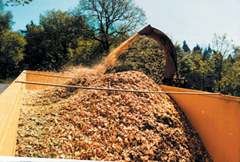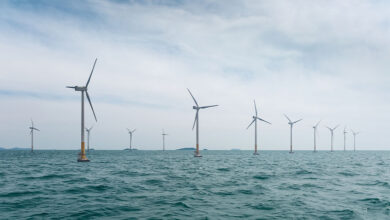Biomass: going with the grain of renewable
 Biomass continues to provide renewable alternatives for the energy market, with the industry expecting to play a major role in helping Ireland meet its renewable heat targets.
Biomass continues to provide renewable alternatives for the energy market, with the industry expecting to play a major role in helping Ireland meet its renewable heat targets.
The biomass sector of the renewables industry continues to grow, and is projected to play an important role in future growth of sustainable energies if certain conditions are met. In its 2010 Energy Report, SEAI stated that biomass as a percentage of total primary energy requirement grew by 9.6 per cent in 2009 (contrasting with declines of 13.6 and 17.7 per cent in oil and coal respectively), though its total share of output remains relatively low at 1.3 per cent. In 1990 it was 1.1 per cent.
In its Bionenergy roadmap, SEAI predicted that biomass could be a cornerstone of national energy requirements. 27 per cent of transport fuel, 28 per cent of electricity demand and 40 per cent of heat demand could be sourced from bioenergy. Meeting the 2020 national bio-energy targets, it claims, could create 8,000 new jobs, mostly in rural locations.
Tom Bruton, President of the Irish Bioenergy Association, says that whilst progress in increasing energy sourced from biomass in transport has been slow, increasing the renewable component in heat has worked well. “Biomass will deliver the majority of the heat target, at least 80 per cent of the heat target; the rest will be solar and thermal. The majority of that is wood energy. There are compression boilers and about 6,000 domestic wood pellet boilers and they’re all working away effectively.”
Recent years have seen actions to develop the biomass industry. In 2007 a bioenergy pilot scheme was established by the Department of Agriculture, and a new three year scheme was commenced in 2010. Up to €1,300 per hectare of funding is being provided to cover 50 per cent of the costs of growing the energy crops, willow and miscanthus. In 2011 89 applications were received. The new Minister for Agriculture, Simon Coveney, has said his officials are also examining possible contracts with companies involved in bioenergy for continuity of markets.
In October 2010 the Department of Communications, Energy and Natural Resources submitted a pre-application submission to the European Commission for approval of a new biomass price under the Renewable Energy Feed-in Tariff (REFIT) scheme. If approved, producers of energy will be guaranteed between 8.5 and 15 cent per kilowatt hour (depending on the type of electricity used) for technologies such as anaerobic digestion CHP, biomass CHP and biomass combustion.
Another impetus for increasing biomass sources is the government target of 30 per cent bio-mass co-firing in the three remaining peat burning power stations by 2015. To meet this target 900,000 tonnes of wood per annum will be needed.
A possible factor in the future role of biomass in Ireland’s energy supply is national climate change policy, with biomass viewed as a component in the agriculture sector’s role in reducing emissions. In its submission during consultation on the previous government’s Climate Change Response Bill, Teagasc stated that there was significant potential to displace fossil fuels through bioenergy. It stated: “[L]and use change will be necessary in order to reach our bioenergy targets and achieve substantial mitigation from bioenergy. Similar to carbon offsetting through afforestation, land use change from pasture or annual cropland to perennial biomass crops has the potential to significantly offset greenhouse gas emissions by means of carbon sequestration into carbon sinks.”
 The new Government is committed to legislating on climate change targets as well as creating a new State company called Bioenergy, incorporating an annual 14,700 hectare afforestation programme.
The new Government is committed to legislating on climate change targets as well as creating a new State company called Bioenergy, incorporating an annual 14,700 hectare afforestation programme.
For the Irish Bioenergy Association, which has 180 members including farmers and corporate members such as the ESB and Bord na Móna, the two principal actions needed for developing the industry are the greening of public procurement (primarily biomass for heating and biofuels for transport) and increasing the carbon levy. “If you can just switch your procurement from fossil fuel to renewable fuel without any major capital cost that would be a great example for the public sector. Carbon taxation is at a low level at the minute but it’s made a small differential between the renewable energies and the fossil fuels,” says Bruton.





